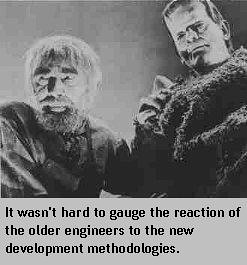From the cradle to the grave

During the last couple of month’s worth of conversations with product managers and product marketers, the following questions popped up with conspicuous regularity:
- What’s the difference between an offering and a product?
- How much do service offerings need to be treated as products, meaning that they need real product management?
- How do you know when something is ready to be called a product?
- How do other companies handle "productization"?
- What best practices do other vendors use when defining the product roadmap?
- Should we put our product into maintenance mode?
- Realistically, when can we cut off support?
The order in which I’ve placed these questions is no accident. They’re the cycle of birth, maturation, old age, and death that all products face. 
Without getting into all of these questions, which would take much more verbiage than one blog post permits, it’s worth making an observation about the questions themselves: The challenges of the product lifecycle illustrate that the technology industry is still in its adolescence.
Product managers face two levels of difficulty, therefore, in handling these issues. First, even in the best of circumstances, the work required take a serious amount of project management, negotiations with customers, potentially nasty legal pitfalls, and a whole lot of other tasks.
Unfortunately, that’s where the lack of industry-wide best practices make this work twice as arduous as it should be. In other parts of the economy, vendors have long ago worked out these de-support issues. Automobile companies, for example, know from the day a new car appears on the show floor how many years into the future it’s going to keep having to devote attention to this product. When the three-year warranty on my television ends, I have some idea, as a customer, how much help to expect from the manufacturer and the place where I bought the device.
No such clarity in the technology industry, except perhaps on the hardware side. Our current economic woes, however, may be muddying that picture. Customers are less willing to upgrade hardware, if they can avoid it. Vendors would prefer that they didn’t avoid it. Who will win that tug of war?
I’m not surprised, therefore, to hear these questions from technology vendors–and in particular, the people whose job description alludes to managing products. Perhaps technology vendors can save themselves a lot of grief, since they’ll have enough challenges in the next year, if they were to apply a bit more discipline to the product lifecycle.
[Cross-posted at The Heretech, where I write things that don’t appear here!]